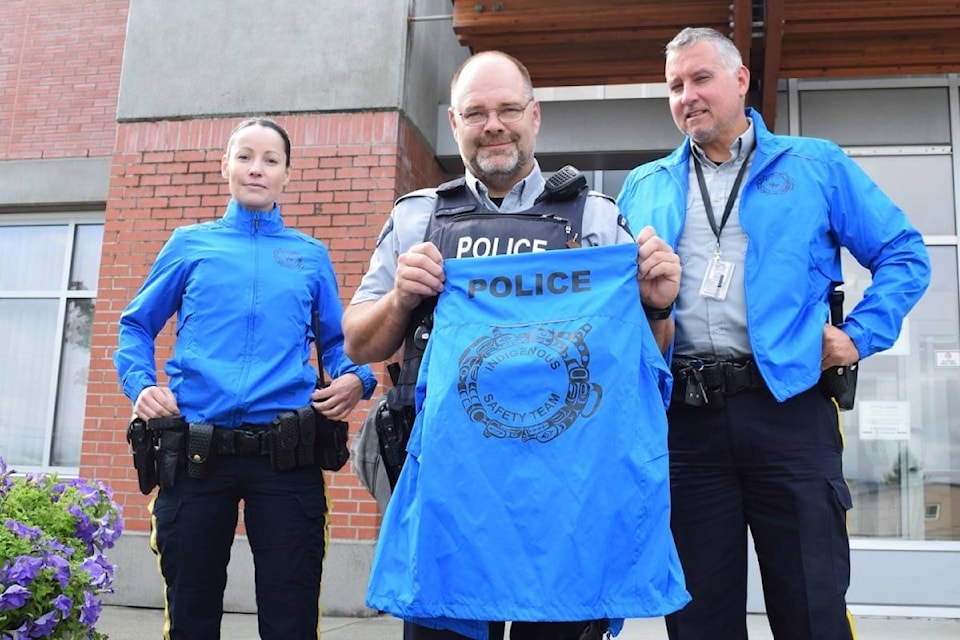Port Alberni RCMP have launched a new pilot program that aims to improve the lives of high-risk Indigenous people living in the Alberni Valley.
The Indigenous Safety Team (IST) is a locally-focused harm reduction and crime prevention initiative and a street level outreach program comprised of police, as well as mental health, substance abuse and Indigenous representatives. The program has been launched by Port Alberni’s Indigenous Policing Section.
“Police partnering with other agencies is not a new concept,” explained project lead Cst. Beth O’Connor. “What makes the Indigenous Safety Team different is that it does target Indigenous people.”
RELATED: Nuu-chah-nulth Tribal Council and Port Alberni RCMP sign historic agreement
Clients can include elders, adults and youth of any nation, who may be involved in criminal behaviour, public nuisances, family violence, victimization or a combination of factors. Indigenous youth especially are frequently travelling through Port Alberni from the West Coast.
“Having that positive contact on the street helps us understand where people are,” explained O’Connor. “It helps us do our job better when someone is at risk or missing. We’re seeking to help the most vulnerable in our community.”
The idea for the IST was brought forward by Cpl. Jay Donahue, who has worked within the Indigenous community for more than 21 years. O’Connor came into the Indigenous Policing Section just this year, and was given the opportunity to explore a pilot project.
Together with Cst. Pete Batt, Donahue and O’Connor are often out on the streets, making contact with high-risk community members. They wear a different uniform—a bright blue jacket that identifies them as police and members of the IST. Along with the jackets, members also carry bracelets reading, “Uushymus Hupii,” which translates to “Helper Friend.”
“We get feedback that we don’t always have as regular police,” said O’Connor. “Some of our clients are not always trustworthy of police. We’re trying to change that. We’re not searching backpacks or anything, just meeting people where they’re at.”
The goal is to create “consistent and regular contact,” says O’Connor. There is a triage procedure for identifying clients—forming a priority group, a general outreach group and an emerging or preventative group. The IST will make regular contact with these clients and conduct intensive case management, seeking to improve circumstances and linking clients with local services. Nuu-chah-nulth Nations will assist the team in maintaining a culturally sensitive approach to client engagement. RCMP members will continue to work with clients as they come back into the community.
“We set out to target Indigenous people in the community that are very unwell,” said O’Connor. “We build up a background, reach out to the client and come up with a tailored plan to try and get them to a better place. We’re trying to create a safer, healthier Indigenous community.”
O’Connor explained that police can “bridge a gap” when it comes to health care, because RCMP members are able to meet clients in potentially dangerous or unsafe conditions.
“We can reach people in a place in a safe manner that civilians cannot,” she said. “For police, we don’t have that boundary. We can truly meet people where they’re at.”
The IST has been out on the streets for more than a month now. The team consists of two members working two days a week, spending 16+ hours on outreach. Although it is a small sample size, O’Connor said, “We’ve had more success than I could have hoped for.”
She is optimistic about the future of the program, as well. In the coming months, the team might undergo a name change to something more culturally meaningful, and O’Connor hopes the team can get a vehicle with ghost markings.
The program has already undergone some changes, added O’Connor, because Port Alberni has a unique Indigenous history that has to be taken into account by policing services. “We’re learning as we go,” she said. “We’re left with a beautiful, custom project for Port Alberni and for Nuu-chah-nulth people.”
elena.rardon@albernivalleynews.com
Like us on Facebook and follow us on Twitter
